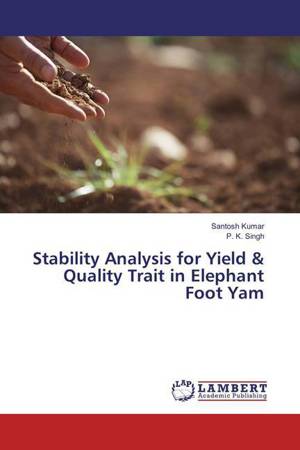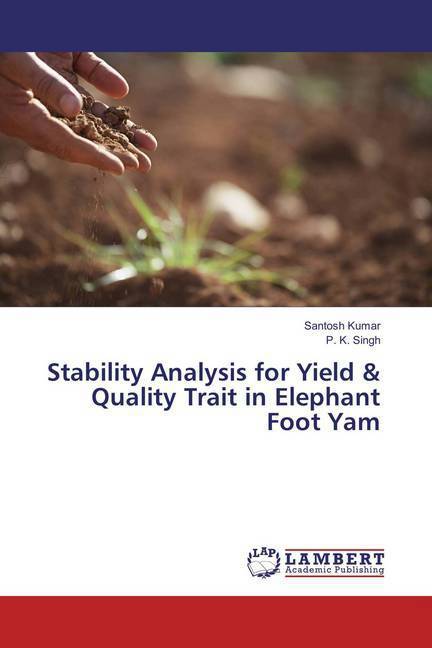
- Afhalen na 1 uur in een winkel met voorraad
- Gratis thuislevering in België vanaf € 30
- Ruim aanbod met 7 miljoen producten
- Afhalen na 1 uur in een winkel met voorraad
- Gratis thuislevering in België vanaf € 30
- Ruim aanbod met 7 miljoen producten
Zoeken
Stability Analysis for Yield & Quality Trait in Elephant Foot Yam
Santosh Kumar, P. K. Singh
Paperback | Engels
€ 54,95
+ 109 punten
Omschrijving
Tuber crops have been classified as the third most important food crops after cereals and legumes. Ayurveda emphasizes the use of Amorphophallus paeoniifolius as a food as well as a medicine and denotes the tuber as a ''Mahabhaishajyam'' i.e. superior medicine. The tubers are believed to have blood purifier property and are used in medicines for piles, asthma, dysentery and other abdominal disorders. It is valued nutraceutically and pharmaceutically as a rejuvenate agent and have high content of nutrients and minerals. Therefore, it is rightly referred as the ''KING OF TUBERS''. A detailed knowledge of genetic variability, heritability, genetic advance, correlation and path coefficient of various quantitative traits and their contribution toward yield is essential for enhancing crop maximum productivity. To characterise genotypes as to their range of adaptation and in identifying unusual performance at specific location, regression techniques are useful. Therefore, an attempt was made to insight in detail the study of variability, character association, and stability/ adaptability for thirteen characters among thirty-five genotypes across four environments.
Specificaties
Betrokkenen
- Auteur(s):
- Uitgeverij:
Inhoud
- Aantal bladzijden:
- 92
- Taal:
- Engels
Eigenschappen
- Productcode (EAN):
- 9783659791833
- Verschijningsdatum:
- 4/12/2015
- Uitvoering:
- Paperback
- Afmetingen:
- 150 mm x 220 mm
- Gewicht:
- 145 g

Alleen bij Standaard Boekhandel
+ 109 punten op je klantenkaart van Standaard Boekhandel
Beoordelingen
We publiceren alleen reviews die voldoen aan de voorwaarden voor reviews. Bekijk onze voorwaarden voor reviews.








